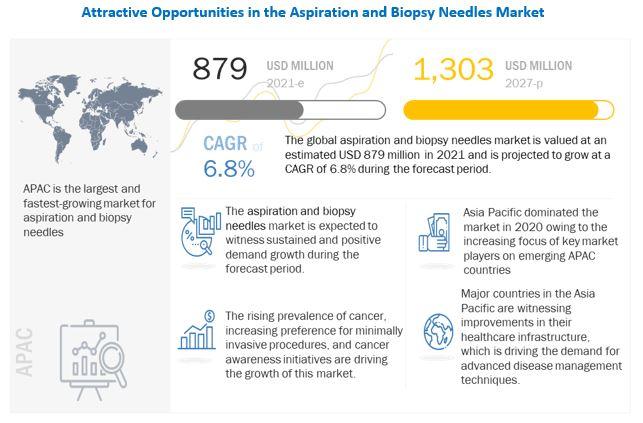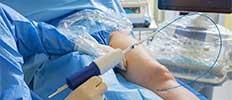According to a new market research report, "Aspiration & Biopsy Needles Market by Product (Aspiration Needle, CNB, VAB), Application (Breast, Lung, Bone Cancer), Procedure (Image-guided (Ultrasound, MRI, Stereotactic), Non-image-guided), End user (Hospital, ASC, Academia) - Global Forecasts to 2027" The global aspiration and biopsy needles market is valued at an estimated USD 879 million in 2021 and is projected to reach USD 1,303 million by 2027, at a CAGR of 6.8% from 2021 to 2027. The rising prevalence of cancer, increasing preference for minimally invasive procedures, and the cancer awareness initiatives undertaken by governments and global health organizations.
The biopsy needles segment accounted for the largest share of the aspiration and biopsy needles market in 2020 due to its widespread adoption in healthcare facilities. This segment is also expected to grow at the highest rate during the forecast period.
The COVID-19 pandemic has resulted in significant reductions in cancer screening, cancer management visits, and cancer biopsy procedures across the globe. As a result of lockdowns, cancer screening services were disrupted to some extent, which ultimately lowered the demand for biopsy needles.
Download PDF Brochure @ https://www.marketsandmarkets.com/pdfdownloadNew.asp?id=71036825
According to estimates from the International Agency for Research on Cancer (IARC), in 2018, there were 17.0 million new cancer cases and 9.5 million cancer deaths worldwide.

According to the American Cancer Society, about 9.6 million people die from cancer every year, and 70% of cancer deaths occur in low-to-middle income countries such as China and India; these proportions are expected to increase further by 2025. With the rising prevalence of cancer in major regions across the globe, the demand for effective cancer diagnosis is expected to increase in the coming years.
With the growing awareness about different types of cancers, the demand for biopsy procedures is expected to increase in the coming years. However, there is a dearth of skilled surgeons to perform minimally invasive biopsy procedures. For instance, a shortage of more than 2,300 medical oncologists is expected in the US by 2025 (Source: Journal of Global Oncology).
